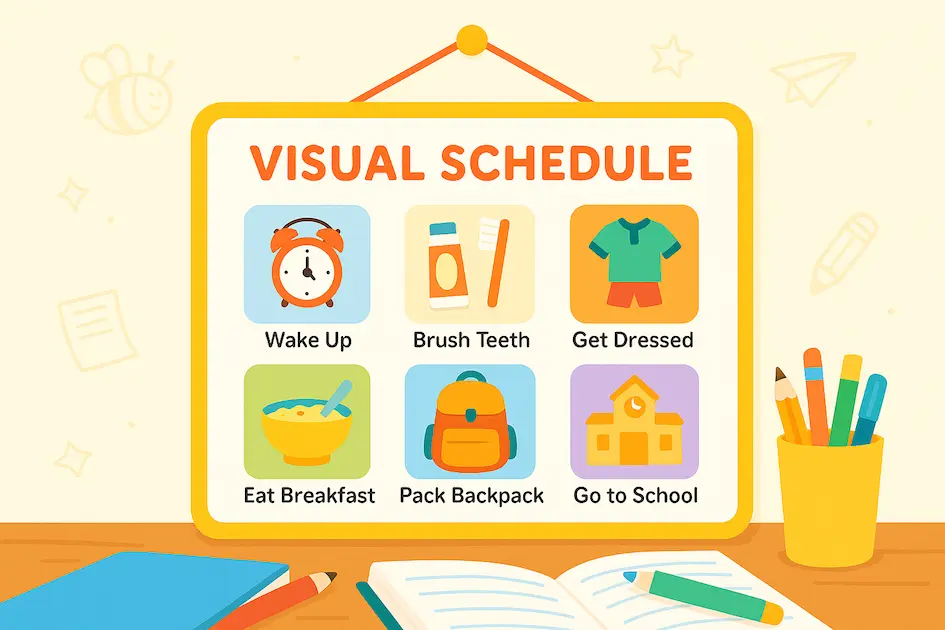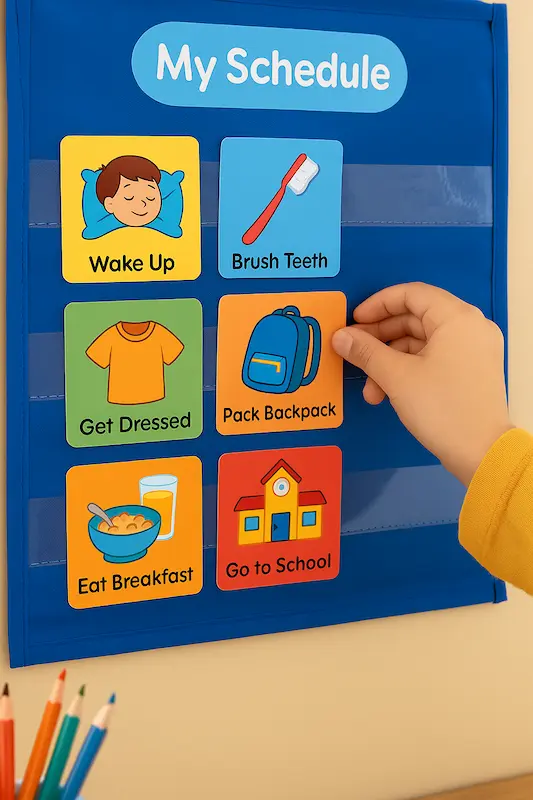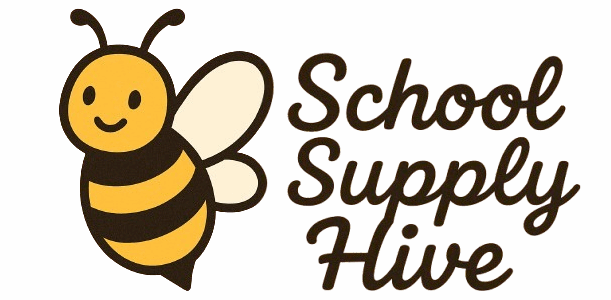How to Use a Visual Schedule with Young Learners
For many young children, especially those in preschool through early elementary, transitions can be tough. One minute they’re happily playing — the next, it’s meltdown time because it’s time to clean up or head out. That’s where structure helps. When you use a visual schedule with young learners, you give them a clear, predictable roadmap for the day. And for kids who can’t yet tell time or read fluently, pictures speak louder than clocks or words.

What We’ll Cover
- Why visual schedules work so well for young children
- Different types of visual schedules to try
- Steps to build and use one at home or in the classroom
- Tips for keeping it flexible and age-appropriate
Why Visual Schedules Work
Young learners thrive on structure. Knowing what comes next helps reduce anxiety, improve focus, and build independence. A visual schedule shows daily routines or specific tasks using images, icons, or simple drawings. It removes the guesswork — and the power struggles — from everyday transitions like brushing teeth, starting homework, or getting ready for school.
This approach works especially well alongside strategies like a morning routine for kids or a dedicated homework space, helping create a rhythm your child can count on.
Types of Visual Schedules
There’s no one-size-fits-all approach. Here are a few common styles to consider based on your child’s age and needs:
- Daily schedule: Shows key routines like wake-up, meals, school time, and bedtime
- Task sequence chart: Breaks down specific routines (e.g., “Get dressed” → “Brush teeth” → “Pack backpack”)
- First-Then board: Great for toddlers or kids who benefit from one step at a time (e.g., “First clean up, then snack”)
- Weekly planner: For older learners starting to manage longer-term events or activities
Step 1: Choose or Create Your Schedule
You can buy pre-made visual schedule cards online, but making your own can be just as effective — and even more personal. Use printable icons, photos of your child doing each task, or simple clip art. Keep it visual, not word-heavy. Laminate pieces or print on cardstock for durability.
Quick Tip: Involve your child in building the schedule. Kids are more likely to follow something they helped create.
Step 2: Make It Visible and Easy to Use
Post your schedule at eye level in a place your child sees daily — near the bedroom door, in the bathroom, or next to their backpack station. Use Velcro strips, magnets, or a dry-erase board for easy updates.

Pair this with a homework caddy or launch pad zone to create a structured, self-service setup your child can manage independently.
Step 3: Walk Through the Schedule Together
At the start of each day, review the schedule out loud. Use phrases like, “First we’ll eat breakfast, then we’ll brush our teeth.” As the day goes on, let your child move pieces, check things off, or flip cards to mark what’s done. This gives them a sense of control — and that’s half the battle.
Step 4: Be Consistent, But Flexible
Kids crave routine, but life happens. If something changes — like a canceled activity or unexpected errand — adjust the schedule together. This models flexibility and helps them process change without spiraling.
It’s okay if the schedule isn’t followed perfectly every day. The goal is predictability, not perfection.
When Visual Schedules Work Best
- Morning and bedtime routines: Reduce resistance by showing the sequence of tasks
- Homework time: Keep kids focused with a short task board or first-then chart
- Before transitions: Help with moving from free play to clean-up, or from screen time to outdoor time
- For neurodiverse learners: Children with ADHD, autism, or anxiety often benefit from visual supports
“Visual schedules give kids a sense of control — and help parents spend less time repeating themselves.”
Final Thoughts: Start Small, Build Confidence
When you use a visual schedule with young learners, you’re doing more than managing time — you’re giving your child a sense of control and helping them build independence, one step at a time. Keep it simple, be patient, and celebrate the little wins. As your child gets used to the structure, you’ll likely see fewer battles and more cooperation.
Need help creating calm transitions? Pair your visual schedule with a strong morning routine or use it alongside your homework station setup to keep after-school hours on track.
